History
In 1895, Daniel David Palmer delivered the first recorded chiropractic adjustment to Harvey Lillard, a janitor in his office. Harvey had been deaf since his childhood when he hurt his back. Harvey had a full recovery from his back pain including the restoration of his hearing after only that one adjustment. |
||||||||||||||||
The Spine
Although this may seem like an extreme example, and chiropractic is certainly not a usual cure for deafness, Dr. Palmer's story clearly illustrates the potential that chiropractic care demonstrates within the realm of healing. On the surface it may seem that chiropractic is limited to helping the spine, muscles and joints, however this is not always the full case. It must be remembered that the spine's function is to provide protection to the spinal cord, which is a direct extension of the brain, while allowing for the extremely versatile bending and ranges of motion of the body's trunk. It's really quite remarkable to think of the agility that this extension of the brain (the spine and spinal cord) has during bodily motion. If you've ever seen a professional gymnast perform, you can see that the degree of flexibility of the vertebrae and spinal cord can be extensive. And yet, the system of wires connecting brain to body continues to function fully even during these extreme ranges of motion. |
||||||||||||||||
The Brain
|
||||||||||||||||
Balance and Subluxation |
||||||||||||||||
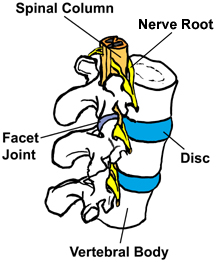 |
Whenever there is a system containing many moveable parts. a complex balance is necessary between those parts. In the spine, this is further complicated by the fact that between each vertebra are not just one, but several joints. In order to maintain that balance, each one of these joints must be moving entirely, properly in all of its ranges of motion. If even one of the joints is not moving properly, it disturbs the balance to some degree. The lack of proper movement of these vertebral joints is called SPINAL FIXATION. When a vertebral joint is not moving properly and this imbalance disturbs the nervous system, this is called a SUBLUXATION. Either can result in other joints having to move more excessively to pick up the slack, which itself causes irritation and can also result in some form of pain. | |||||||||||||||
Control
As previously mentioned, the spinal cord helps to control the whole body. This includes your ability to use your muscles, move about, feel your sense of touch and your perception of pain and temperature. It also includes the body's ability to maintain itself; regulate its proper temperature, keep it breathing properly, keep the heart beating regularly, control the flow of blood through the blood vessels, control proper digestion and elimination, while even controlling the body's immune system. You are now beginning to see the utmost importance of good spinal health. |
||||||||||||||||
Pain
Although pain is often a result of disturbed spinal balance, it is usually the last thing to come and the first thing to go with the onset of subluxation or spinal fixations. When a person is finally in pain they make the mistake of thinking that they are now sick, or that something is now wrong that was not before. This is not quite accurate. Remember, pain is the last thing to come. When the body finally gets to the point that it is in pain, it is now to the point where the problem is so bad that it can no longer be ignored. Pain is the the body's reaction that says, "I can no longer function in this way, I am in trouble now, HELP!". Also, pain usually disables a person from moving in certain ways. This is the body saying, "until the fixation or subluxation is corrected and the balance is restored, it is harmful to move in this way.". The body will go to great lengths to protect itself from more permanent damage, often this will be in the form of an intense muscle spasm which the body uses to pull itself into a protective position. Pain is a stimulus that will make sure that you don't move in a particular direction or way which will cause any further damage. So pain actually has an important function in the body's ability to maintain and heal itself. Pain often makes sure that you don't make the problem worse. |
||||||||||||||||
Maintenance
|
||||||||||||||||
Chiropractors
|
||||||||||||||||
|
What Is Chiropractic?
VISIT: Andrew Bayuk, DC Call NOW for an appointment:
Bayuk Chiropractic Education - The Spinal Column (formerly the original Chiro-Web)
Chiropractic Caduceus image -
Brain and Spinal segment images -
Healing Hands 2 image - |
||||||||||||||||

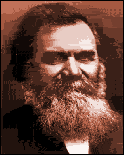

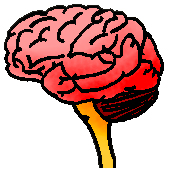 When people think of the brain, they picture only part of the brain. That is, they only picture the part that is contained within the skull. It is more accurate to picture the brain as the part in the skull, with a tail! Any structure in the brain is complex, delicate and responsible for running and maintaining all the systems and functions of the body. This includes the "tail" part, which is the spinal cord. Although one may think of the spinal cord as the wires that enable the brain to communicate with all parts of the body, this is only the partial picture. The spinal cord has certain functions within itself that do not relay to the brain, and so it has features of the brain itself. Reflexes are an example of a function that occurs entirely in the spinal cord and does not involve the brain itself. While the brain is encased in a housing of solid bone, the skull; the spinal "casing" needs to allow for a great deal of motion. Nature's answer to this challenge is the 24 movable bones called the vertebrae. The vertebrae afford protection to the delicate spinal cord, while allowing for a full range of motion of the trunk of the body.
When people think of the brain, they picture only part of the brain. That is, they only picture the part that is contained within the skull. It is more accurate to picture the brain as the part in the skull, with a tail! Any structure in the brain is complex, delicate and responsible for running and maintaining all the systems and functions of the body. This includes the "tail" part, which is the spinal cord. Although one may think of the spinal cord as the wires that enable the brain to communicate with all parts of the body, this is only the partial picture. The spinal cord has certain functions within itself that do not relay to the brain, and so it has features of the brain itself. Reflexes are an example of a function that occurs entirely in the spinal cord and does not involve the brain itself. While the brain is encased in a housing of solid bone, the skull; the spinal "casing" needs to allow for a great deal of motion. Nature's answer to this challenge is the 24 movable bones called the vertebrae. The vertebrae afford protection to the delicate spinal cord, while allowing for a full range of motion of the trunk of the body.
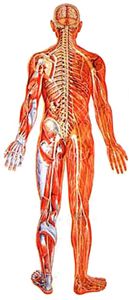
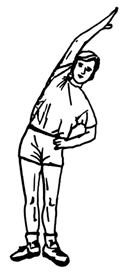
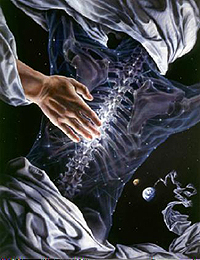
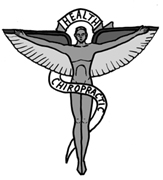 Chiropractic Physicians are the only ones that are specifically trained to restore spinal balance. Chiropractors
can correct subluxations
and spinal fixations.
Chiropractors can properly mobilize spinal segments that have become
fixated with their highly trained specificity and skill. No other type of doctor or profession makes this claim. Chiropractors are extensively trained to accomplish these ends. It is important to note the emphasis of chiropractic. That is, that
the body heals itself, it's never the band-aid that heals the cut, it's never the pill that cures the cold. The body, when functioning properly, heals and maintains itself. It's our job as chiropractors to
restore your spinal motion and remove any resulting nervous system interference that the body is having, so that the body can do its job: maintain your health,
naturally!
Chiropractic Physicians are the only ones that are specifically trained to restore spinal balance. Chiropractors
can correct subluxations
and spinal fixations.
Chiropractors can properly mobilize spinal segments that have become
fixated with their highly trained specificity and skill. No other type of doctor or profession makes this claim. Chiropractors are extensively trained to accomplish these ends. It is important to note the emphasis of chiropractic. That is, that
the body heals itself, it's never the band-aid that heals the cut, it's never the pill that cures the cold. The body, when functioning properly, heals and maintains itself. It's our job as chiropractors to
restore your spinal motion and remove any resulting nervous system interference that the body is having, so that the body can do its job: maintain your health,
naturally!